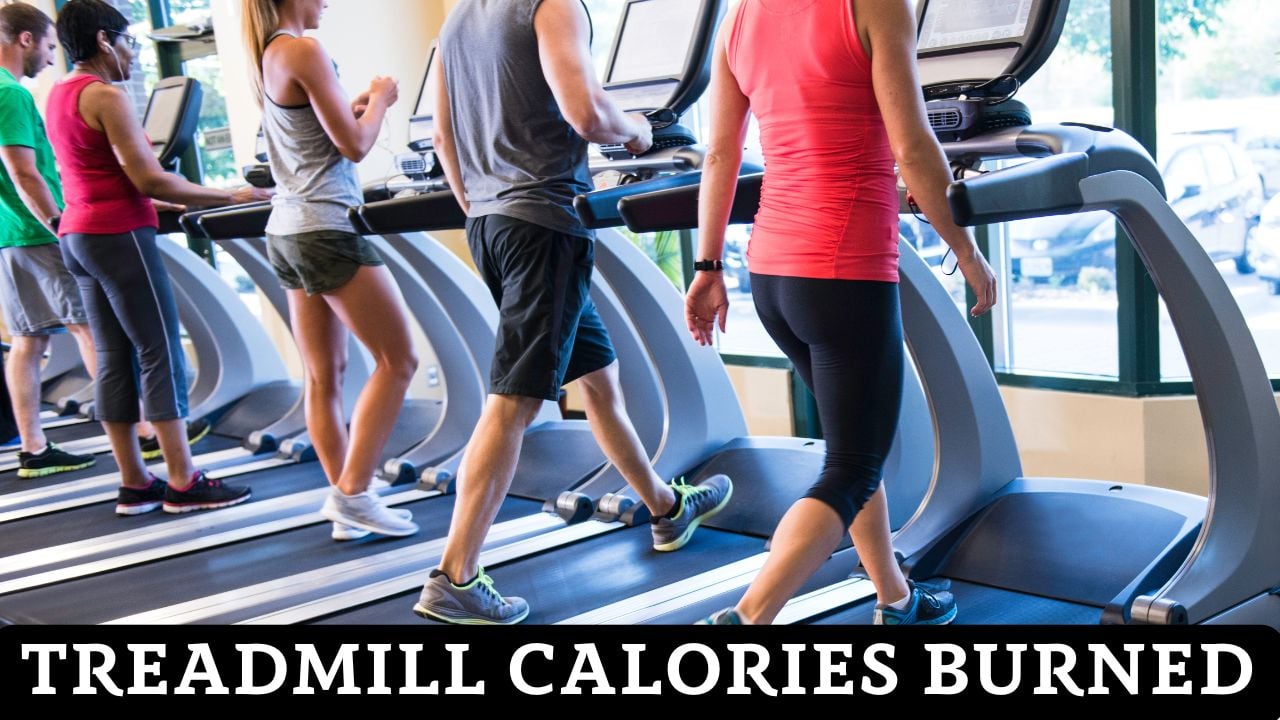Treadmill Calories Burned Calculator
Calculate calories burned on treadmill with scientific MET analysis for running, walking, and jogging

How Many Calories Does Treadmill Exercise Burn? 🏃
🏃 Treadmill Calorie Burn by Activity Type
Treadmill exercise burns between 200-1000+ calories per hour, depending on the specific activity and intensity level. For a 150-pound person, walking at 3.5 mph burns approximately 320 calories per hour, while running at 8.0 mph can burn up to 860 calories per hour. Light walking activities typically burn around 250-400 calories per hour, making treadmill training an accessible and effective way to maintain cardiovascular health and manage weight. Based on research from the Compendium of Physical Activities, our calculator provides scientifically accurate estimates for all treadmill intensities.
| Treadmill Activity | Speed | MET Value | Calories/Hour (130 lb) | Calories/Hour (150 lb) | Calories/Hour (180 lb) | Intensity Level |
|---|---|---|---|---|---|---|
| Slow Walking | 2.0 mph | 2.3 | 143 cal | 165 cal | 187 cal | Very Light |
| Walking | 3.0 mph | 3.5 | 218 cal | 251 cal | 284 cal | Light |
| Brisk Walking | 4.0 mph | 5.0 | 311 cal | 358 cal | 406 cal | Light-Moderate |
| Jogging | 5.0 mph | 8.3 | 516 cal | 595 cal | 673 cal | Moderate |
| Running | 6.0 mph | 9.8 | 609 cal | 702 cal | 795 cal | Vigorous |
| Fast Running | 8.0 mph | 14.5 | 902 cal | 1040 cal | 1177 cal | Very Vigorous |
Note: Calorie values based on scientific MET data from the Compendium of Physical Activities. Values shown are for 0% incline. Adding incline can increase values by 5-70% depending on grade.
Treadmill Calorie Formula & Scientific Methodology
🔬 The Scientific Calculation Method
Primary Formula: Calories = (MET × 3.5 × Weight in kg × Time in minutes) / 200
Where:
• MET: Metabolic Equivalent from Compendium of Physical Activities
• 3.5: Resting oxygen consumption constant (ml/kg/min)
• Weight: Your body weight in kilograms
• Time: Duration in minutes
• 200: Caloric conversion factor
Incline Adjustment: MET × Incline Multiplier (1.0 for flat to 1.7 for 15% grade)
This formula provides scientifically accurate estimates based on validated research methods used in exercise physiology studies.
Research from PMC studies confirms the reliability of this approach for treadmill calorie estimation.
Treadmill Intensity Standards & Performance Levels
| Activity Type | Speed Range | MET Value | Intensity Level | Pace (min/mile) | Calories/Hour (70kg) |
|---|---|---|---|---|---|
| Slow Walking | 2.0-2.5 mph | 2.3-2.9 | Very Light | 24-30 min | 160-202 cal/hr |
| Casual Walking | 3.0-3.5 mph | 3.5-4.3 | Light | 17-20 min | 245-300 cal/hr |
| Brisk Walking | 4.0-4.5 mph | 5.0-7.0 | Light-Moderate | 13-15 min | 350-490 cal/hr |
| Jogging | 5.0-6.0 mph | 8.3-9.8 | Moderate | 10-12 min | 580-685 cal/hr |
| Running | 6.7-8.0 mph | 11.0-14.5 | Vigorous | 7.5-9 min | 770-1015 cal/hr |
| Fast Running | 8.6+ mph | 16.0-23.0 | Very Vigorous | < 7 min | 1120-1610 cal/hr |
Note: Calorie values shown for a 70kg (154lb) individual on flat treadmill (0% incline). Actual values vary with body weight, incline, and individual running efficiency.
How Many Calories Do Treadmill Workouts Burn Over Time?
⏱️ Time-Based Treadmill Calorie Estimates
The time spent on treadmill directly impacts total calorie expenditure. These estimates are based on moderate jogging (5.0 mph, MET = 8.3) on flat treadmill, providing reliable estimates for fitness planning and workout scheduling. For comprehensive fitness tracking, explore our BMR calculator to understand your daily caloric needs and outdoor running calculator for comparison.
| Time | 130 lb (59 kg) | 150 lb (68 kg) | 175 lb (79 kg) | 200 lb (91 kg) | 225 lb (102 kg) | 250 lb (113 kg) |
|---|---|---|---|---|---|---|
| 10 mins | 86 cal | 99 cal | 115 cal | 132 cal | 148 cal | 165 cal |
| 15 mins | 129 cal | 149 cal | 173 cal | 198 cal | 223 cal | 247 cal |
| 20 mins | 172 cal | 198 cal | 231 cal | 264 cal | 297 cal | 330 cal |
| 30 mins | 258 cal | 298 cal | 347 cal | 396 cal | 446 cal | 495 cal |
| 45 mins | 387 cal | 446 cal | 520 cal | 594 cal | 669 cal | 743 cal |
| 60 mins | 516 cal | 595 cal | 694 cal | 793 cal | 892 cal | 991 cal |
Note: Values based on moderate jogging (5.0 mph, 8.3 METs) on flat treadmill (0% incline). Walking burns 40-50% fewer calories, while running burns 20-80% more calories depending on speed.
Advanced Treadmill Performance & Health Benefits
🏔️ Incline Training and Energy Expenditure
Incline Impact: Treadmill incline dramatically increases calorie burn by engaging more muscle groups and requiring greater effort.
Even a 1% incline increases energy expenditure by approximately 5%, while a 10% incline can boost calorie burn by 50% or more.
Research from exercise science studies shows that
incline training provides superior cardiovascular and muscular benefits compared to flat treadmill exercise.
Grade-Specific Benefits: Each 1% incline increase requires approximately 6-10% more energy expenditure.
Steep inclines (8-15%) transform treadmill walking into a vigorous workout that can rival running intensities while being gentler on joints.
💪 Treadmill Training for Strength and Cardiovascular Health
Cardiovascular Conditioning: Treadmill training provides controlled cardiovascular exercise that improves heart health, endurance, and metabolic efficiency.
The consistent surface and pace control allow for precise heart rate training and progressive overload.
Complement your treadmill training with leg strengthening exercises
and core strengthening for optimal results.
Joint-Friendly Exercise: Treadmill surfaces provide superior shock absorption compared to concrete or asphalt, reducing impact stress by up to 40%.
This makes treadmill training ideal for injury prevention and rehabilitation while maintaining high calorie burn rates.
🌟 Interval Training and Calorie Optimization
High-Intensity Intervals: Alternating between high and moderate intensities on treadmill maximizes calorie burn both during and after exercise (EPOC effect).
Interval training can increase overall session calorie burn by 25-40% compared to steady-state exercise.
Use our HIIT workout plans to structure effective treadmill intervals.
Progressive Training: Gradually increasing speed, incline, or duration creates progressive overload that improves fitness and maintains high calorie burn rates.
Track your progress with our VO2 max calculator
and support your training with proper protein intake for recovery.
How the Treadmill Calorie Calculator Works 🔍
🔬 The Science Behind Our Calculator
Our treadmill calorie calculator uses the gold-standard formula from exercise physiology research: Calories = (MET × 3.5 × Weight in kg × Time in minutes) / 200. This equation calculates energy expenditure based on your body’s metabolic response to treadmill exercise. The MET values are sourced from the Compendium of Physical Activities, a comprehensive database of energy costs for hundreds of physical activities. Our incline adjustment factor accounts for the additional energy required when walking or running uphill, providing accuracy within 10-15% of laboratory measurements. This scientific approach ensures you get reliable estimates for planning your fitness goals and tracking progress.
How Many Calories Does Treadmill Training Burn by Speed? 🏃♀️
📈 Speed-Based Calorie Burn Analysis
Treadmill speed dramatically affects calorie burn, with exponential increases at higher velocities. Walking speeds (2-4 mph) provide excellent low-impact exercise for beginners and those focusing on endurance. Jogging speeds (5-6 mph) offer optimal calorie burn for moderate fitness levels, while running speeds (7+ mph) maximize energy expenditure for advanced athletes. Each 1 mph increase in speed typically adds 15-25% more calorie burn. For optimal results, combine with our HIIT training plans and support your workouts with proper protein intake.
| Speed Category | Speed Range | MET Range | Cal/30min (150 lb) | Best For | Fitness Level |
|---|---|---|---|---|---|
| Recovery Walking | 2.0-2.5 mph | 2.3-2.9 | 83-104 cal | Active recovery, rehabilitation | Beginner |
| Casual Walking | 3.0-3.5 mph | 3.5-4.3 | 126-154 cal | Daily fitness, weight maintenance | Beginner-Intermediate |
| Brisk Walking | 4.0-4.5 mph | 5.0-6.3 | 179-226 cal | Fat loss, cardiovascular health | Intermediate |
| Light Jogging | 5.0-5.5 mph | 8.3-9.0 | 298-323 cal | Endurance building, fitness | Intermediate-Advanced |
| Steady Running | 6.0-7.0 mph | 9.8-11.5 | 351-413 cal | Performance training, racing | Advanced |
| Fast Running | 8.0+ mph | 11.5-16.0 | 413-574 cal | High-performance training | Expert |
Note: Calorie estimates for 30-minute sessions at 0% incline. Adding incline or interval training can increase calorie burn by 30-100% depending on technique and fitness level.
Treadmill Calorie Calculator FAQs
❓ How accurate is the treadmill calorie calculator?
Our calculator uses the scientifically validated formula: Calories = (MET × 3.5 × Weight in kg × Time in minutes) / 200, combined with research-based MET values from the Compendium of Physical Activities. This provides accuracy within 10-15% for most individuals, which is comparable to laboratory measurements. The calculations are based on extensive treadmill research and validated MET compendiums.
🏃 Which treadmill activities burn the most calories?
The highest calorie-burning treadmill activities include fast running (8+ mph, 14.5+ METs), steep incline walking (10-15% grade), and interval training combinations. Running at 10 mph burns approximately 700-1000 calories per hour for most individuals, while walking at 15% incline can match jogging intensities with lower joint impact.
⚖️ How does body weight affect treadmill calories?
Body weight directly affects treadmill calorie burn through increased energy requirements for movement. The relationship is linear: a 20% increase in body weight typically results in approximately 20% more calories burned for the same treadmill speed and duration. This is because heavier individuals require more energy to move their body mass.
🕒 How long should treadmill workouts be?
For general fitness, aim for 20-45 minute treadmill sessions, 3-5 times per week. Beginners should start with 10-15 minutes at comfortable walking pace, gradually increasing duration and intensity. Weight loss goals typically require 30-60 minutes of moderate to vigorous treadmill exercise. Compare with our walking calculator for outdoor alternatives.
🌿 Can treadmill training replace outdoor running?
Yes, treadmill training can effectively replace outdoor running for cardiovascular fitness and calorie burn. Treadmills offer consistent conditions, precise pace control, and reduced injury risk through better surface cushioning. However, outdoor running provides varied terrain, wind resistance, and psychological benefits. Combining both approaches optimizes training variety and prevents boredom.
📱 How can I maximize calorie burn on treadmill?
To maximize calorie burn: 1) Use incline training (5-15% grades), 2) Incorporate interval training with speed changes, 3) Maintain consistent form and posture, 4) Gradually increase duration and intensity, 5) Combine different workout types. High-intensity treadmill sessions can burn 600+ calories per hour when performed correctly. Track your progress with our comprehensive fitness calculators.
⚕️ Treadmill Training & Fitness Safety Disclaimer
This treadmill calorie calculator provides estimates based on scientific formulas and should not replace professional medical advice or exercise guidance. Calorie estimates are most accurate when combined with comprehensive health assessments including cardiovascular health, musculoskeletal fitness, and metabolic rate measurements. Individual results may vary due to genetic factors, health conditions, medications, running efficiency, treadmill settings, and environmental factors. The intensity guidelines are based on population studies and may not apply to all individuals. When beginning new treadmill programs, start gradually and progress slowly to prevent injury. Use proper running form, wear appropriate footwear, stay hydrated, and follow treadmill safety guidelines. Consult with healthcare professionals and certified fitness specialists before beginning intensive treadmill programs, especially if you have pre-existing health conditions, injuries, or joint problems. This tool is for educational and informational purposes only and should not be used as the sole basis for exercise or health decisions.
